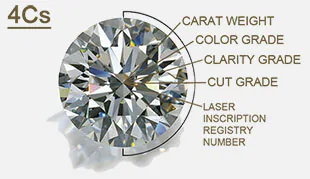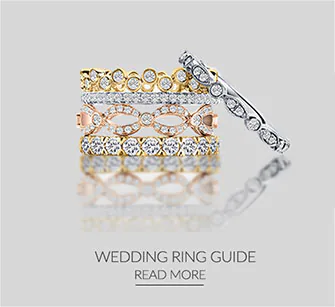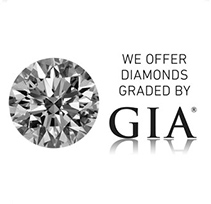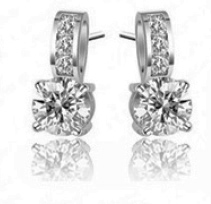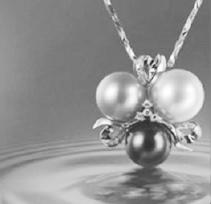RINGS
EDUCATION
Thousands of couples around the world have trusted us with their most important moments. With the largest selection of diamonds and meticulously designed, handcrafted rings, were here to help you find your way to the perfect ring.
DIAMOND
EDUCATION
For most people, buying a diamond is a new experience, but that doesn't mean it should be overwhelming. Understanding a diamond's quality characteristics is straightforward and simple.
Our diamond education is designed to answer all your questions. In just a few minutes you'll know everything you need to know to find your perfect diamond.
JEWELLERY
EDUCATION
it is our mission to take the mystery out of your purchase by offering only the finest quality fine jewellery available, along with expert guidance and education. Our jewellery is crafted with superior materials and inspected against exceptional quality standards.
PEARL
EDUCATION
Use this guide to find the pearl that is right for you by educating yourself on the quality and value of the cultured pearls that we offer.
GEMSTONE
EDUCATION
Gemstones and rare minerals can evoke strong emotions and spur intrigue. While most loose gemstones and minerals are purchased for ornamental jewellery purposes, others are possessed for their fascinating attributes. Natural gemstones and minerals add sparkle to our lives and invigorate our soul with the earth's natural beauty.

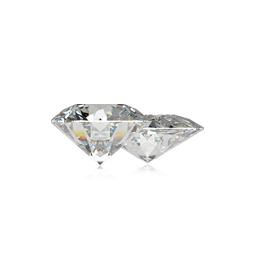
CUT
The cut grade indicates how much a diamond will sparkle
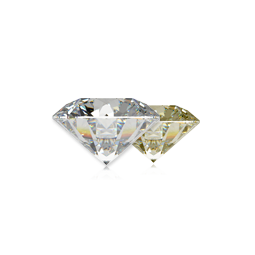
COLOR
This grade refers to the "whiteness" of a diamond, or its lack of color.
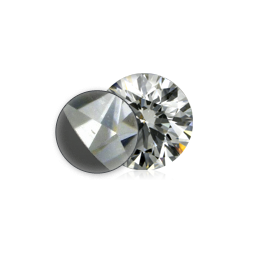
CLARITY
The clarity grade is based on any tiny natural identifiers found within a diamond.
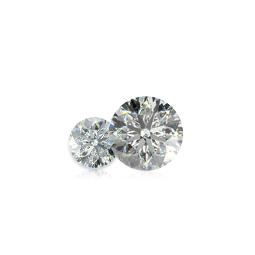
CARAT
This is a measure of a diamond's weight and a reflection of its size.
1. DIAMOND CUT
Cut is a diamond's most important characteristic, it has the greatest overall influence on a diamonds beauty.
A diamond's cut grade is an objective measure of a diamond's light performance, or, what we generally think of as sparkle. When a diamond is cut with the proper proportions, light is returned out of the top of the diamond (which gemmologists refer to as the table). If it is cut too shallow, light leaks out of the bottom; too deep and it escapes out of the side.
If you want a truly brilliant diamond, consider those with cut grades of Very Good or Ideal. We recommend selecting the highest cut grade within your budget. The reason is simple: of the Four Cs, no other characteristic has a greater influence on a diamond's appearance.
2. DIAMOND CLARITY
Clarity is a measure of the number and size of the tiny imperfections that occur in almost all diamonds. Many of these imperfections are microscopic, and do not affect a diamond's beauty in any discernible way.
Much is made of a diamond's clarity, but of the Four Cs, it is the easiest to understand, and, according to many experts, generally has the least impact on a diamond's appearance. Clarity simply refers to the tiny, natural imperfections that occur in all but the finest diamonds. Gemmologists refer to these imperfections by a variety of technical names, including blemishes and inclusions, among others. Diamonds with the least and smallest imperfections receive the highest clarity grades. Because these imperfections tend to be microscopic, they do not generally affect a diamond's beauty in any discernible way.
Select an "eye-clean" diamond - one that has no imperfections visible to the unaided-eye through the crown. An excellent value, diamonds of this clarity are much less expensive than flawless (FL) or internally flawless (IF) diamonds, which are extremely rare and command higher prices.
3. DIAMOND CARAT WEIGHT
Carat is specifically a measure of a diamond's weight, and by itself may not accurately reflect a diamond's size. We tend to evaluate diamond size by viewing it from the top because that is how diamonds are presented to us when set into a ring.
As the name suggests, carat weight specifically refers to a diamond's weight. However, much as a person's weight does not necessarily correlate with height, carat weight, by itself, may not accurately reflect a diamond's size. To gain a precise understanding of diamond size, we recommend considering carat weight with two other characteristics: 1) the distance across the top of the diamond measured in millimeters, and 2) the diamond's cut grade.
It is possible to have a diamond of a lower carat weight, but higher cut grade, that appears larger than a diamond with a larger carat weight, but poor cut.
Diamond prices jump at the full- and half-carat weights. Diamonds just below these weights cost significantly less, and, because carat weight is distributed across the entirety of the diamond, small size differences are almost impossible to detect.
To choose the best carat weight of diamond, consider the size of her finger, the size of your setting, and your budget.
4. DIAMOND COLOR
Colour refers to a diamond's lack of colour, grading the whiteness of a diamond. A colour grade of D is the highest possible, while Z is the lowest.
Colour manifests itself in a diamond as a pale yellow. This is why a diamond's colour grade is based on its lack of colour. The less colour a diamond has, the higher its colour grade. After cut, colour is generally considered the second most important characteristic when selecting a diamond. This is because the human eye tends to detect a diamond's sparkle (light performance) first, and colour second.
For the purist, look for a colourless diamond with a grade of D-F for a diamond with no discernible colour.
For an excellent value in a diamond with little or no noticeable colour to the unaided eye, look for a near-colourless grade of G-I
YELLOW










